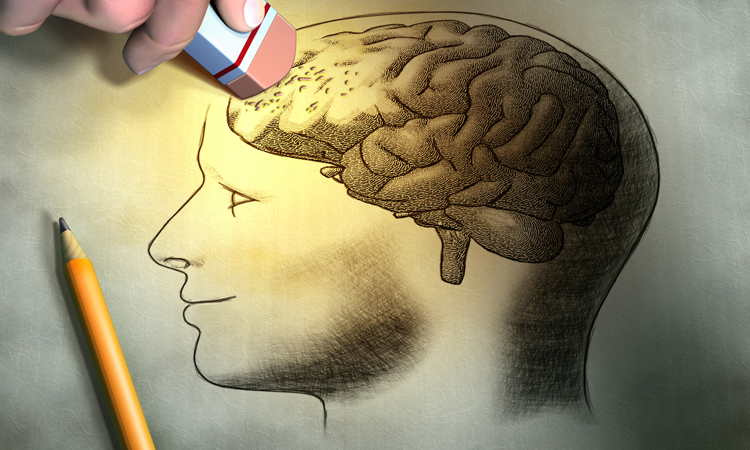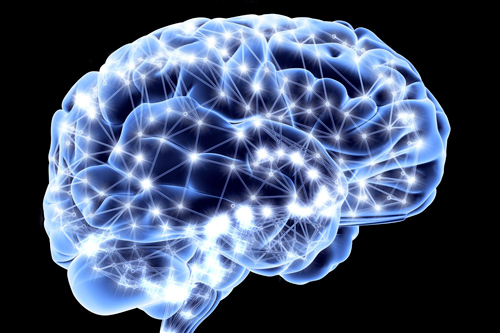
It probably wouldn’t surprise you to learn that research into the effects of (violent) video gaming, junk food, excessive lack of sleep, stress, pornography, and digital device multitasking don’t promote brain health. In fact, some study results have suggested that such activities can lead to brain shrinkage, an effect linked to declining memory and difficulty maintaining robust thought processes. It’s, er, a no-brainer that bigger is better, right? We should want our brain structures to increase in size? Not so fast. The results of a recent study published in Neuropsychologia may indicate that smaller can sometimes be better.
Jürgen Hänggi, who holds a Ph.D. in Neuropsychology and Neurosciences, led an experiment to investigate the brains of elite chess players. In only the second study ever to examine the structural differences of the brains of elite chess players, Hänggi and his team took structural MRI scans (plus diffusion tensor scan images, designed to identify microstructural changes) of 20 male expert players and compared them to 20 male nonexpert players. The surprising results: not much difference at all—and the differences that did occur were in places where the expert brains had shrunk.
The chess masters’ brain shrinkage was found in very particular, localized places, including:
- Occipital-temporal junction (OTJ): in this area (where the occipital lobe at the back and the temporal lobes on the side of the head intersect), the gray matter (a large portion of your central nervous system that contains the bulk of your brain’s neurons) had reduced. This makes sense, considering the role of the OTJ: representing objects and their relationships to each other.
- Superior longitudinal fasciculus (SLF): A pair of bidirectional bundles that connect the front and back of the cerebrum, the SLF is one of the brain’s major communication pathways. It relays information from visual to executive areas. The elite players’ brains evidence less “diffusivity” in the SLF: The brain naturally prunes away excess structures (e.g., neurons) to enhance its efficacy. The elite chess players’ brains showed more pruning in the SLF than did those of nonexpert players.
- Caudate nucleus (CN): Responsible for voluntary movement, decision making, and integrating spatial information with motor formulation (among other functions), the CN in elite players was revealed to be smaller than that in the nonexperts. Furthermore, the more years the player had been active in the game, the more shrinkage showed up.
How’s a regular person supposed to integrate this knowledge in life changes designed to support brain processing? Hard to say, especially since Hänggi and his colleagues admit the results are “difficult to explain on the basis of current knowledge.” Plus, as they point out, the relation between cortical thickness and gray matter volume and psychological task performance is unclear. Still, the experiment’s results are compelling in terms of how we think about the brain and our own personal approach to keeping it healthy.
In the past five years advanced neuroimaging technology, research, and the proliferation of brain games and websites devoted to improving brain function have placed a spotlight on how anyone can effect brain changes through simple actions. As a supersize-oriented society, we naturally equate bigger with better, but studies like these offer a reverse perspective. Writing in Wired, Christian Jarrett sums it up by saying, “It’s clear that a simple rule—shrinkage is bad / growth is good— just doesn’t work.”
What might work, however, is approaching these results through a perspective of balance. Self-improvement processes have long incorporated the idea of evenly distributing ideas, experiences, practices, and life lessons. It seems the brain, too, knows that balance, not bigger, is better. This perspective can expand our understanding of Hänggi’s results in a few ways.
First, the results can lead us to revise our approach to brain health. Rather than seeking to increase the size of our brains, we can aim to increase our ability to concentrate, focus, and dedicate ourselves to mastery in an area of interest, knowing that as we do, our brains will automatically change to help us achieve this. Master and grandmaster chess players study, practice, imagine, plan, review, assess, and learn in ways consistently related to a single focus. Consequently, their brains seem to prune expressly to better support the goal of exceptional prowess.
Second, it’s a known neuroscientific fact that neurons that fire together wire together and that the brain improves efficacy with repetition. Perhaps Hänggi’s evidence also suggests that this kind of concentrated focus over many years helps the brain prune away excess in ways that increase site-specific functionality versus generalized brain health.
Third, nature exists on a continuum of balance. Continually making our brains and their structures bigger would reach unnatural proportions. The chess study results could suggest that nature already knows when the brain needs to grow in size and in what ways it needs to shrink in order to function optimally. Such a view fosters a deeper connection to the mind/body feedback loop in ways we can’t measure in day-to-day life, but points to a significant scientific integration in which we can believe and trust.
The more complex implications of Hänggi’s and other related experiments remain to be seen. A compelling takeaway for everyday use right now might be related to the philosophy of brain change and how and what and in which way we seek to enhance personal brain function. Sometimes what needs to be bigger is not the brain but our commitment to repeated intellectual processes—increased time we spend on an activity that leads to the beneficial decrease in brain structures.
What if all along we’ve been thinking that bigger is better and the real benefit of studies like these is that they remind us, again, that balance in the brain, as in life, is the key to longevity and success?
Click here to get inspired by Rose’s easy steps to positively change your mind



1 Comment
online medicine to buy
I was curious if you ever considered changing
the layout of your blog? Its very well written; I love what youve got to say.
But maybe you could a little more in the way of content so people could connect with it better.
Youve got an awful lot of text for only having 1 or 2 images.
Maybe you could space it out better?